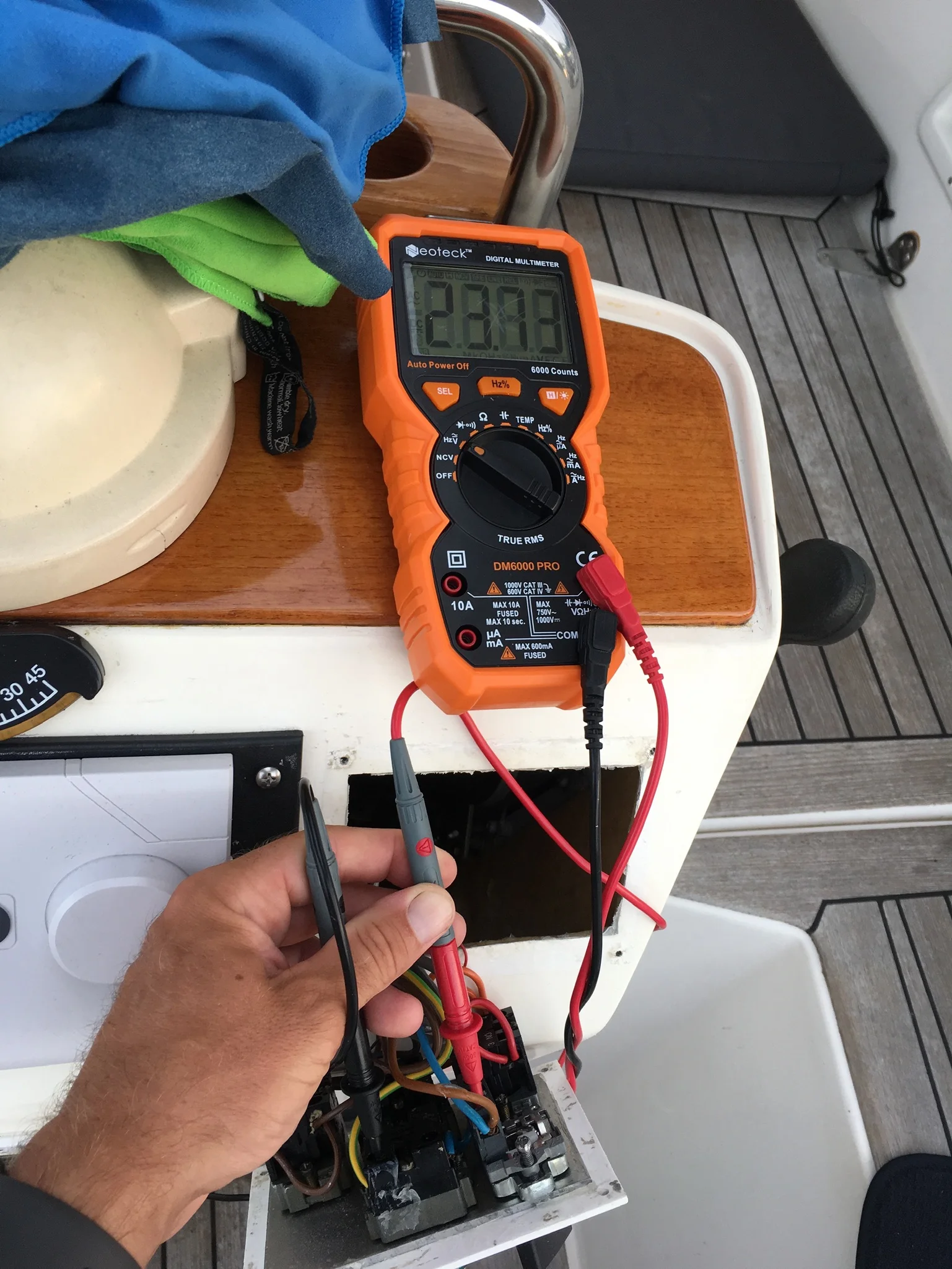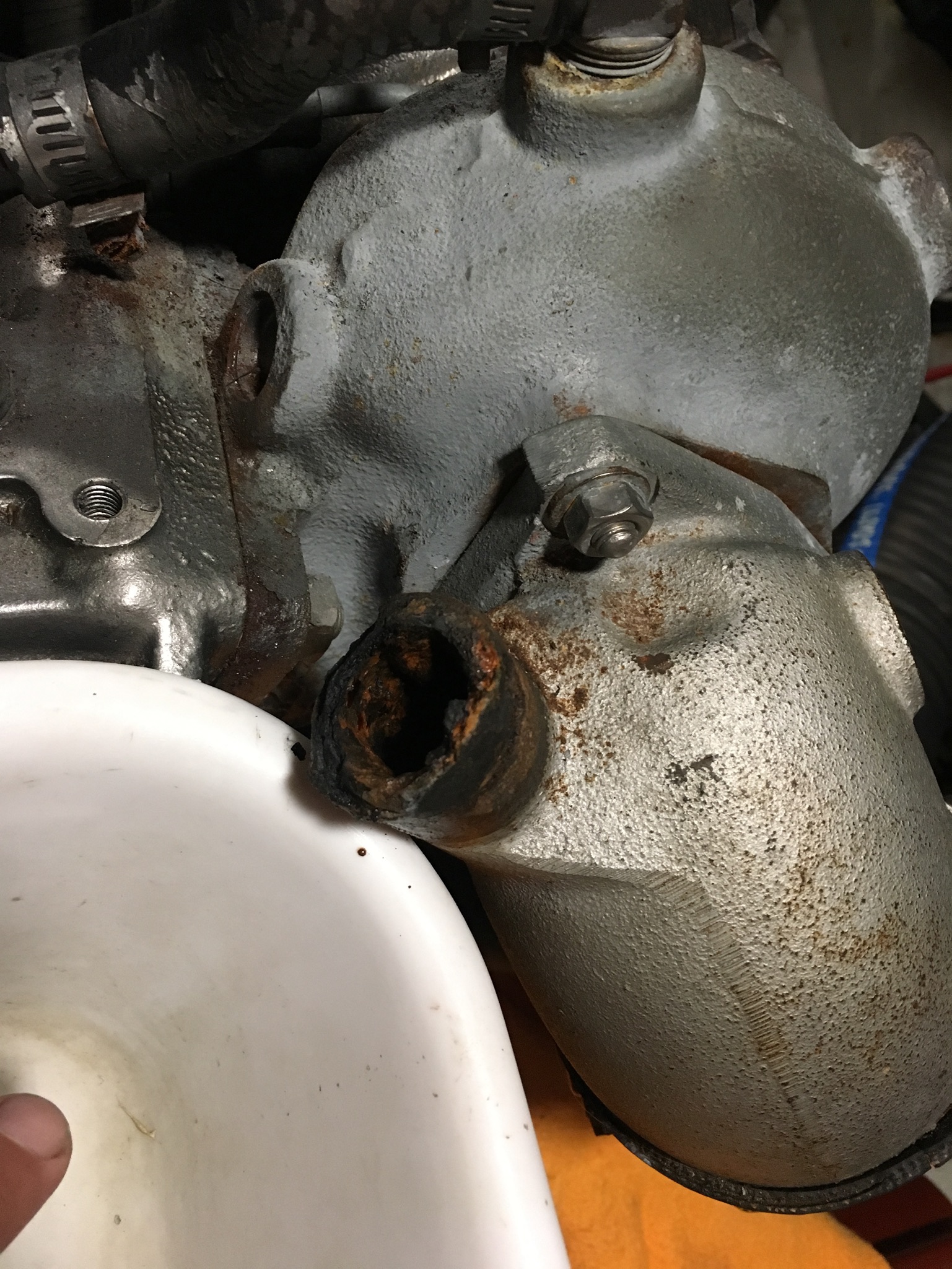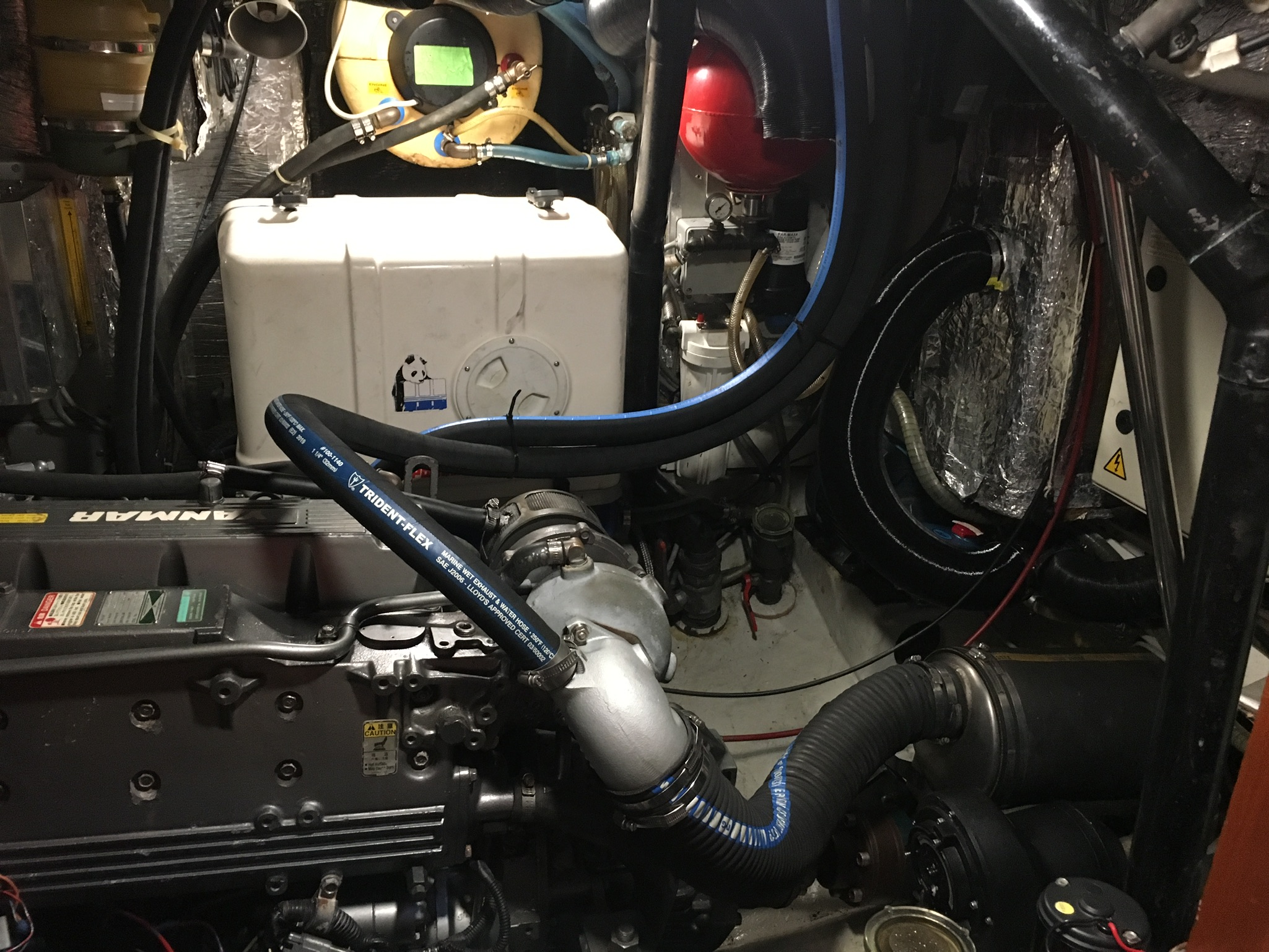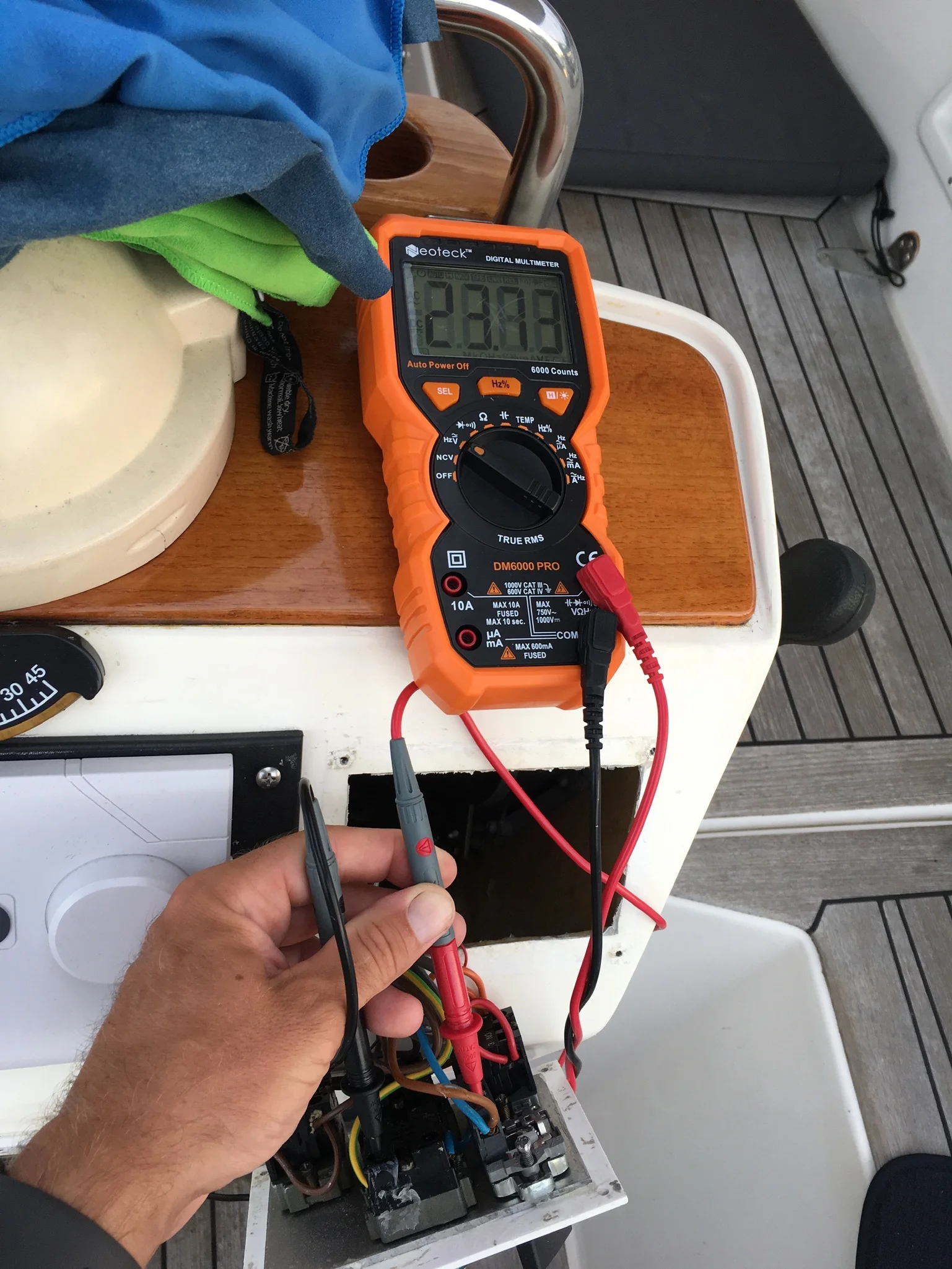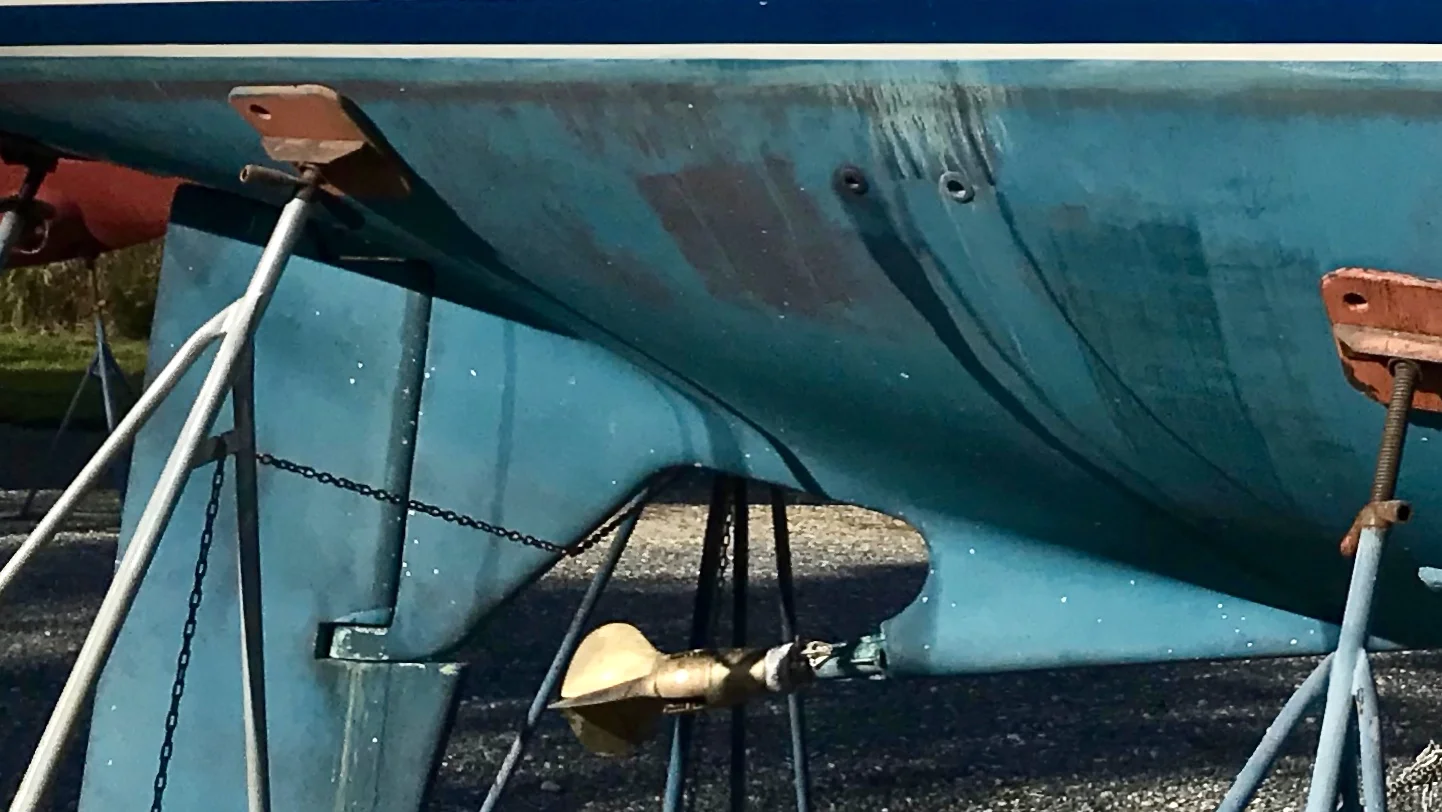Engineering is Really Useful Now
So it turns out having an engineering background is pretty useful when you’re living on your boat. Actually really, really useful.
I loved the 4 years at Queen’s University getting an electrical engineering degree. In between having a lot of fun, drinking too much (hmm kind of like living on a boat…), learning how to live as a quasi-adult, and generally growing up whole lot, I also learned a lot about the science behind the inventions we rely upon and more importantly how to problem solve when those inventions break. Even if I did promptly go out in the workforce and spend the better part of the next 2 decades engineering “business process” instead of electronics, machines, or software, I always missed those days buried in math, physics, and messing around in the lab. Don’t get me wrong, I’m truly grateful for how well that path has worked out for our family; however, it’s always bothered me a little that I’ve never seized the opportunity to apply science and make it do useful things in the real world like all true engineers aspire to do.
1998. First year Queen’s Engineering. What an eager young man ready to take on the world’s challenges. And some pretty sweet technology sitting on that desk…
1999. Second year Queen’s Engineering. What an eager young man ready to intimidate those naive first year students during frosh week with some gentian dye an a well-earned engineering jacket…
Well Carpe Diem - opportunity has knocked and this time circumstances are right to dust the cobwebs off my slightly outdated engineering training. All those afternoons spent in the lab are coming in really, really handy now since we’ve moved onto Matriarch. There hasn’t been much other option either, save paying $100/hr USD (or more) to hire professionals to solve our annoying boat problems for us. Fortunately or unfortunately, depending on how you look at it I guess, my time is definitely worth less than that!
Example #1: Play that Funky Music
The other night our friends were giving Megan a hard time about her lack of music IQ which wasn’t really fair given a lot of the songs they were quizzing her on were released well before we were born (I have a suspicion we may be the youngest on the dock). That being said, it did make me realize we’re not playing nearly as much music in our floating home as we did in our suburban home. Why? Mainly because the sound system on our boat, while very good quality, wasn’t equipped with bluetooth or even a USB port to connect one of our phones. On top of that, whoever originally installed the sound system connected the engine starter battery as the power source. Not good considering the starter battery is only intended for (surprise, surprise) starting the engine and shouldn’t be tasked with any other purpose just in case you run it down and find yourself with no way to start your engine at the worst possible time.
Is this a critical problem? No. It’s easy enough to minimize use of the sound system and keep a close eye on the starter battery to make sure we don’t unwittingly run it down too far. However, not being able to easily connect the phones or laptops to play our Spotify favourites was becoming a big inconvenience. So off I go to rewire the power and add a bluetooth connection so we can stream to our hearts’ content.
After pulling out the stereo face and seeing the jumble of wires behind, I was immediately thankful I knew something about what they all did and how to track down the issue. Then the deja vu hit me remembering all those afternoons spent in the lab at Queen’s University. Sessions which usually concluded with a well-earned stop at the engineering pub, Clark Hall. I guess things are coming full circle since beers are usually in order once any of these boat jobs get done! Sometimes they even help along the away… In this case, my impromptu boat lab lasted about four hours, because everything on a boat takes twice as long as expected, and at the end of the day we had a bluetooth enabled sound system running off our house batteries and we were good to go. Grace immediately asked me to crank up the “DJ Flower” playlist (that’s her stage name…).
Step 1: Take stuff apart.
Step 2: Trace that pesky power wire back to the electrical panel.
Step 3: Rewire and hope you didn’t break anything in the process!
Example #2: Going Nowhere Fast
I’ve spent a lot of time in our engine room lately, with good reason given we’ve got so much critical equipment housed in there: our diesel engine, watermaker pumps, generator, fresh water system pump, diesel heaters, air conditioner intake and pump, etc. While Megan and I were giving all the systems a thorough once-over to make sure we were comfortable with how everything was operating, Megan noticed a pretty significant spot of chafing where one of the water exhaust hoses from the main engine was rubbing against a poorly place clamp from a neighbouring hose.
Is this a critical problem? Not right now but it sure could turn into one. Hoses don’t last forever and it’s most definitely better to replace them early, and at the dock, rather than waiting for a leak or rupture to appear and being forced to MacGyver a fix while on the water in order to get yourself back to shelter to perform a something more permanent.
The first step is taking out the old hose which is usually easy, but in this case the prior owner (or maybe the owner before that?) had installed a couple angled plumbing fittings in the water exhaust between the output from the engine’s oil cooler and the exhaust elbow where the cooling water mixes with hot gases its way out of the boat. Surprise, surprise, after ripping those out as well I discovered some pretty significant corrosion in each fitting which could be another point of failure in the future. Could they have lasted another 5 years? Maybe. Or maybe one of those fittings would have separated from the water hose the next time we were heading back into the dock leaving us engineless at the worst possible moment. Finally, upon taking the last hose off the exhaust elbow, I found that connection had a decent amount of corrosion as well. So off came the elbow for a look inside which made our decision to replace it as well. Of course, with everything apart we were stuck at the dock until the parts came in and I was able to reassemble and check everything was working again.
These two fittings in the water exhaust hose introduce two sharp angles which aren’t good for water flow…
…and after taking them off it turns out they are both really corroded inside the hose. Not much left of the fitting at all.
Hmm this water hose connection on the exhaust elbow looks suspicious. Better take the whole thing off and see what’s going on.
Is it salvageable? Probably with a good cleaning, but decided to put on a new one and keep the cleaned up original as a spare.
A bigger job than expected, yes. But also one that wasn’t nearly as expensive as I thought since I was able to do all the work myself, not to mention that now I’m confident in how the cooling system is working and I know exactly how it’s put together.
New exhaust elbow on the left. Original on the right. Salt water is killer on boat parts.
A thing of beauty. Two new water hoses (the ones with the blue stripe) and a shiny new exhaust elbow (middle bottom of the picture). Testing confirms it works like a charm!
Example #3: The Switch That’s Always On
Since she’s a big, heavy boat, Matriarch has a bow thruster to help maneuver around tight spaces in marinas. Whoever is at the helm can trigger the thruster by stepping on a foot switch located to either side of the steering column, provided the master switch just in front of the wheel is turned on. The master switch is there to prevent inadvertently stepping on the foot controls and swinging the bow one way or the other by mistake, which is exactly what happened the other day when we were out sailing (thankfully nowhere near something hard). The problem was the master switch was in the ‘off’ position at the time, meaning the bow thruster shouldn’t have activated whether the foot control was stepped on or not.
Is this a critical problem? No again. Of course we can just be careful not to step on the foot switches for the bow thruster and all will be well. Until the moment it isn’t when undoubtedly we’ll be in some unfamiliar port or in a tight anchorage when this small problem could turn into a much bigger one quickly. So off to grab my trusty multi-meter I go!
Why does it always look like such a mess behind these panels?
Me and my multi-meter are becoming great friends! #nerd
After taking off our wheel and taking out the control panel housing the various switches on the steering column, I got to work again channelling my university lab-going self to track down the issue. Turns out this was an easy one, with the switch simply being wired in backward by whichever contractor replaced it the last time (it was obviously newly installed when we purchased the boat). Just a bit of wire stripping and a few turns of a screwdriver later and the switch is back to working as it should and hopefully another problem averted later down the road!
The Big Picture
Everything on our boat is a system that’s been designed to be rugged and operate in some pretty harsh conditions. Keeping it all in ship shape (pun intended) and preventing critical problems that could jeopardize safety is mostly about understanding how the pieces fit together, noticing any signs of trouble early, then having the confidence to take things apart and put them back together. I think this is where I’m most thankful for my background in engineering because those three things are exactly what was drilled into me… in between trips to Clark Hall that is…


